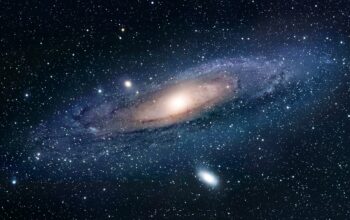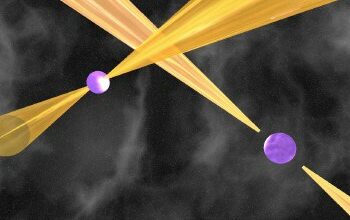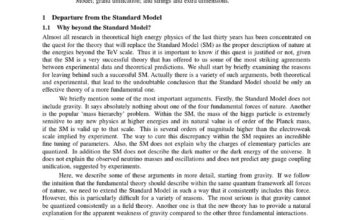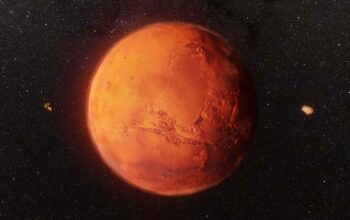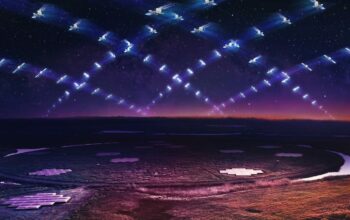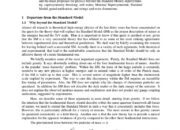The Pioneer Anomaly, a puzzling observation in astrophysics, refers to the unexpected trajectory deviations exhibited by the Pioneer 10 and Pioneer 11 spacecraft as they traveled through the outer solar system. This enigmatic phenomenon has captivated the scientific community since the late 1970s, with various hypotheses emerging to explain the anomalous behavior of these spacecraft. Recently, the scientific discourse surrounding this anomaly has taken a decisive turn, as a series of investigations have decisively refuted the more exotic explanations, leaving standard physics to account for the observed data.
Initially, the Pioneer Anomaly was identified when scientists observed that both Pioneer spacecraft deviated slightly from their expected paths. This deviation manifested as an acceleration toward the Sun at a rate of approximately (8.74 times 10^{-10} , text{m/s}^2). The confirmation of this anomaly was crucial as it implied potential flaws in our understanding of gravitational physics. Researchers embarked on myriad analytical trajectories, seeking to unveil the underlying causes of this phenomenon. Among the initial hypotheses were gravitational influences beyond the solar system, modifications to the inverse-square law, and even speculations involving cosmological aspects like dark energy.
One line of investigation focused on the spacecraft’s thermal emissions. The Pioneers were equipped with radioisotope thermoelectric generators, which produced heat as a byproduct of radioactive decay. As researchers meticulously analyzed the spacecraft’s thermal emission profiles, they speculated that anisotropic radiation—whereby heat is emitted unevenly in various directions—could impart a small but measurable thrust to the spacecraft, thereby altering their trajectories. This hypothesis gained traction, particularly as it aligned with established principles of physics regarding the momentum generated by thermal emission.
However, upon comprehensive evaluation, this hypothesis of thermal radiation was significantly bolstered by further empirical analysis. A thorough examination of the spacecraft’s heat distribution, powered by intricate simulations of thermal dynamics, illustrated how minute discrepancies in temperature across the spacecraft resulted in thrust. The resulting studies indicated that the previously observed acceleration could indeed be attributed to the thermal anisotropy, successfully addressing the anomaly without delving into esoteric explanations.
Moreover, renewed attention was directed at the spacecraft’s instrument calibration and operational parameters. In the course of their journeys, the Pioneers encountered varied environmental conditions, such as solar radiation pressure and interactions with micro-particles from the solar wind. These external factors, although seemingly negligible, could contribute measurable effects on the spacecraft’s momentum. Subsequent analysis demonstrated that even minimal perturbations derived from changes in such environmental conditions could accumulate, leading to the recorded deviations.
Another dimension of the investigation pertained to the accuracy of the navigational models employed by mission operators. As spacecraft traversed vast distances, the precision of their trajectory predictions and the instruments used for navigation became paramount. Issues such as outdated models and imprecise tracking mechanisms were reviewed. It became evident that the underestimation of limitations associated with tracking software might have compounded the perceived anomaly. When factoring these potential inaccuracies into the equations, the anomalies appeared less severe than originally anticipated. In essence, the deviations could be reconciled through improved calibrations of existing models, thereby negating the need for exotic explanations.
Furthermore, various scientific factions had espoused theories involving modifications to gravitational physics itself, postulating potential new forces or interactions. These ideas, while intellectually stimulating, lacked empirical substantiation amid rigorous testing. The prevailing framework of general relativity, first articulated by Albert Einstein, has withstood an extensive array of experimental scrutiny without yielding notable discrepancies in predictions. The reanalysis of the Pioneer data against the backdrop of established physical laws underscored that the original model is not only robust but also remarkably accurate in describing the observable universe.
In concluding the analysis of the Pioneer Anomaly, it has become evident that, while initial conjectures entertained exotic theories, the resolute path to understanding this phenomenon lies squarely with conventional physics. The intersection of thermal effects, navigational precision, and environmental influences elucidates the observed deviations without invoking the complexities of speculative frameworks. This renewed understanding not only consolidates the reliability of established physics but also exemplifies the continuous refinement of scientific inquiry.
Through the lens of this investigation, one may find that the intersection of simplicity and complexity is a hallmark of scientific progress. The dismissal of the more exotic explanations fosters a refined understanding, compelling researchers to remain grounded in empirical validation. The ongoing examination of celestial mechanics and spacecraft dynamics serves as a testament to the nuanced interplay between observation and interpretation within the scientific endeavor.
Future missions will undoubtedly benefit from the distillation of knowledge derived from the Pioneer Anomaly. Enhanced instrumentation and advanced tracking algorithms will further illuminate our grasp of the cosmos, ensuring that the lessons learned from prior anomalies guide future exploratory initiatives. As we continue to refine our understanding of the universe, we must cherish the clarity that emerges from rigorous assessment, ultimately allowing us to peer deeper into the mysteries of space.

